-

Jedwabne pogrom
The Jedwabne pogrom was a massacre of Polish Jews in the town of Jedwabne, German-occupied Poland, on 10 July 1941, during World War II and the early stages of the Holocaust.
-

Disney animators' strike
The Disney animators' strike (1941) reflected anger at inequities of pay and privileges at the non-unionised Walt Disney Productions. As a famously autocratic employer, Walt Disney responded to the 5-week strike by firing many of his animators, but was eventually pressured into recognising the Screen Cartoonist's Guild (SCG).
-

1941 theatre strike in Norway
The theatre strike in Norway in 1941 was a conflict between Norwegian actors and Nazi authorities, during the German occupation of the country. The strike involved theatres in the cities of Oslo, Bergen and Trondheim. The strike started on 21 May 1941, as a response to the revocation of working permits for six actors, after they had refused to perform in the Nazified radio. It lasted for five weeks.
-

Legionnaires' rebellion and Bucharest pogrom
The Legionnaires' rebellion and the Bucharest pogrom occurred in Bucharest, Romania, between 21–23 January 1941. As the privileges of the Iron Guard paramilitary organization were being cut off gradually by the Conducător Ion Antonescu, its members, also known as the Legionnaires, revolted. During the rebellion and pogrom the Iron Guard killed 125 Jews, and 30 soldiers died in the confrontation with the rebels. Following this, the Iron Guard movement was banned and 9,000 of its members were imprisoned.
-
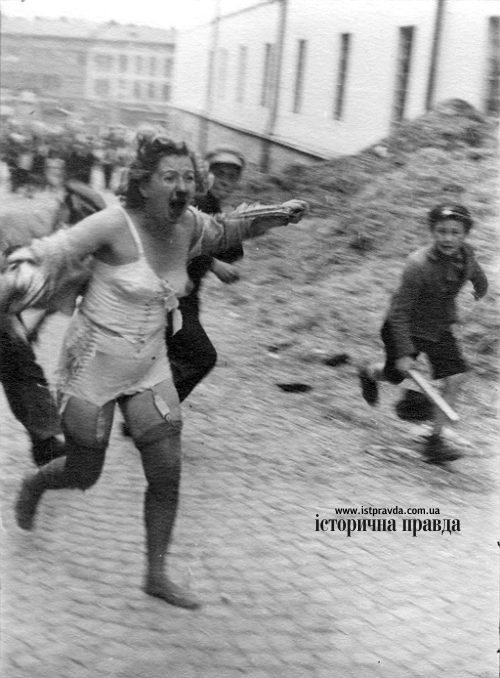
Lviv pogroms (1941)
The Lviv pogroms were the consecutive massacres (pogroms) of Jews in June and July 1941 in the city of Lwów in Eastern Poland/Western Ukraine (now Lviv, Ukraine). The massacres were perpetrated by Ukrainian nationalists (specifically, the OUN), German death squads, and local crowds from 30 June to 2 July, and from 25 to 29 July, during the German invasion of the Soviet Union. Thousands of Jews were killed both in the pogroms and in the Einsatzgruppen killings.
-
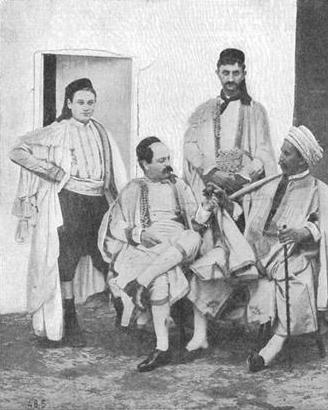
Gabès pogrom
Gabès pogrom was a three-day wave of anti-Jewish violence which erupted in the Tunisian city of Gabès in 1941.
-

Milk strike
The milk strike (Norwegian: melkestreiken) was a strike in Nazi-occupied Oslo on 8 and 9 September 1941. It led to strong reprisals from the German occupiers, in the form of martial law, court- martial, mass arrests, two executions and several long-term jail sentences.
-

Arvida Strike
no info
-
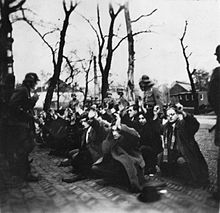
February strike
The February Strike (Dutch: Februaristaking) was a general strike in the German-occupied Netherlands in 1941, during World War II, organized by the then-outlawed Communist Party of the Netherlands in defence of persecuted Dutch Jews and against the anti-Jewish measures and activities of the Nazis in general.
-
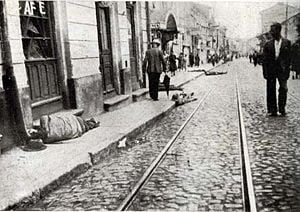
Iași pogrom
The Iași pogrom (Romanian pronunciation: [ˈjaʃʲ] (listen), sometimes anglicized as Jassy) was a series of pogroms launched by governmental forces under Marshal Ion Antonescu in the Romanian city of Iaşi against its Jewish community, which lasted from 29 June to 6 July 1941. According to Romanian authorities, over 13,266 people, or one third of the Jewish population, were massacred in the pogrom itself or in its aftermath, and many were deported.
-
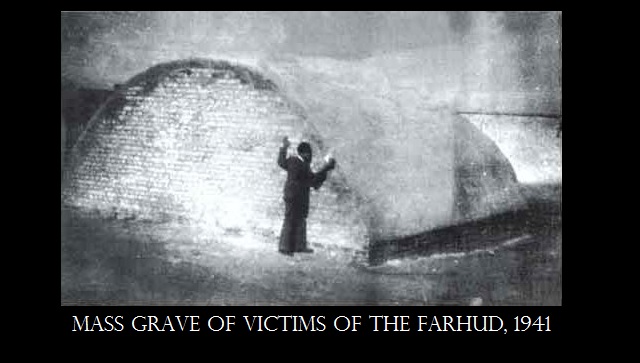
Farhud
Farhud (Arabic: الفرهود) was the pogrom or "violent dispossession" carried out against the Jewish population of Baghdad, Iraq, on June 1–2, 1941, immediately following the British victory in the Anglo-Iraqi War. The riots occurred in a power vacuum following the collapse of the pro-Nazi government of Rashid Ali while the city was in a state of instability. The violence came immediately after the rapid defeat of Rashid Ali by British forces, whose earlier coup had generated a short period of national euphoria, and was fueled by allegations that Iraqi Jews had aided the British. Over 180 Jews were killed and 1,000 injured, and up to 300–400 non-Jewish rioters were killed in the attempt to quell the violence. Looting of Jewish property took place and 900 Jewish homes were destroyed.
-

Strike of the 100,000
The Strike of the 100,000 (French: Grève des 100 000) was an 8-day strike in German-occupied Belgium which took place from 10–18 May 1941. It was led by Julien Lahaut, head of the Belgian Communist Party (Parti Communiste de Belgique or PCB), even though the Nazi—Soviet Pact was still in force. The object of the strike was to demand a wage increase though it was also an act of passive resistance to the German occupation.
-

Radziłów pogrom
The Radziłów pogrom (Polish: Pogrom w Radziłowie) was a World War II massacre committed on 7 July 1941 in the town of Radziłów, in German-occupied Poland. Local Poles forced most of the Jews of the town into a barn and set it on fire, Jews were also murdered in surrounding villages. Death toll estimates vary from between 600 and 2,000; only some 30 Jews survived the massacre due to help from local Poles.
-

Novi Sad raid
The Novi Sad raid, also known as the Raid in southern Bačka, the Novi Sad massacre, the Újvidék massacre, or simply The Raid (Рација / Racija), was a military operation carried out by the Honvédség, the armed forces of Hungary, during World War II, after occupation and annexation of former Yugoslav territories. It resulted in the deaths of 3,000–4,000 civilians in the southern Bačka (Bácska) region.
-

Cultural silence
Cultural silence (Slovene: kulturni molk) was the boycott, ordered in January 1942 by the communist- dominated Slovene Liberation Front (OF), of all cultural activities and events connected with the German and Italian annexation of Slovenia because the Axis powers authorities limited or forbade cultural activities in the Slovene language. It was symbolically announced at a concert in the Union Auditorium in Ljubljana with the popular song The Linden Tree Became Green (Lipa zelenela je). After the capitulation of Italy in 1943, it meant a complete stop to all cultural activity outside the OF.
-

1942 1944 musicians' strike
On August 1, 1942, the American Federation of Musicians, at the instigation of union president James C. Petrillo, began a strike against the major American recording companies because of disagreements over royalty payments. Beginning at midnight, July 31, 1942, no union musician could make commercial recordings for any commercial record company. That meant that a union musician was allowed to participate on radio programs and other kinds of musical entertainment, but not in a recording session. The 1942–1944 musicians' strike remains the longest strike in entertainment history.
-

1942 Luxembourgish general strike
The Luxembourgish general strike of 1942 was a manifestation of passive resistance when Luxembourg was occupied by Nazi Germany during World War II. The strikes opposed a directive that conscripted young Luxembourgers into the Wehrmacht. A nationwide general strike, originating in Wiltz, paralysed the country and led to the occupying German authorities responding violently by sentencing 21 strikers to death.
-

Battle of Manners Street
The Battle of Manners Street refers to a riot involving American servicemen and New Zealand servicemen and civilians outside the Allied Services Club in Manners Street, Wellington, New Zealand in 1943. The club was a social centre, open to all military personnel.
-

Battle of Bamber Bridge
The Battle of Bamber Bridge was an outbreak of racial violence between Black and White American servicemen stationed in the British village of Bamber Bridge, Lancashire in June 1943. The incident, which occurred a few days after the 1943 Detroit race riot, began when white Military Police (MPs) attempted to arrest several African American soldiers from the racially segregated 1511th Quartermaster Truck Regiment at the Ye Old Hob Inn public house in Bamber Bridge.
-

Witten Women's Protest
The Witten Women's Protest was conducted to demonstrate against a specific policy of the Nazi regime. After being evacuated from the city of Witten due to the dangers of Allied bombing raids, women and children were moved to the countryside in Baden, away from their husbands and homes. Many women returned to Witten and their homes despite these regulations. By traveling back and forth between their homes and evacuation sites, they were seen by the Nazi government to be an additional burden on already over-stressed wartime transportation systems. The Nazi Party Gauleiter (regional Party Leader) of Westphalia South, Albert Hoffmann, declared that women from his region would not receive their food ration cards except in Baden or other designated evacuation sites. The protest occurred on October 11, 1943 and achieved the aims of the protesters, backed by a ruling by Hitler in January 1944, to allow the distribution of ration cards regardless of where the women were. According to the SD secret police there were estimated to be 300 women in the Witten Women's Protest. The Witten Women's Protest and the Nazi appeasement of the protesters prompted Goebbels to worry on November 2, 1943 that the regime was losing power by giving in repeatedly to Germans gathered on the streets in dissent. The protest weighed decisively on Hitler's decision in January 1944, that no Nazi official could manipulate ration card distribution as means of enforcing evacuation regulations.
-
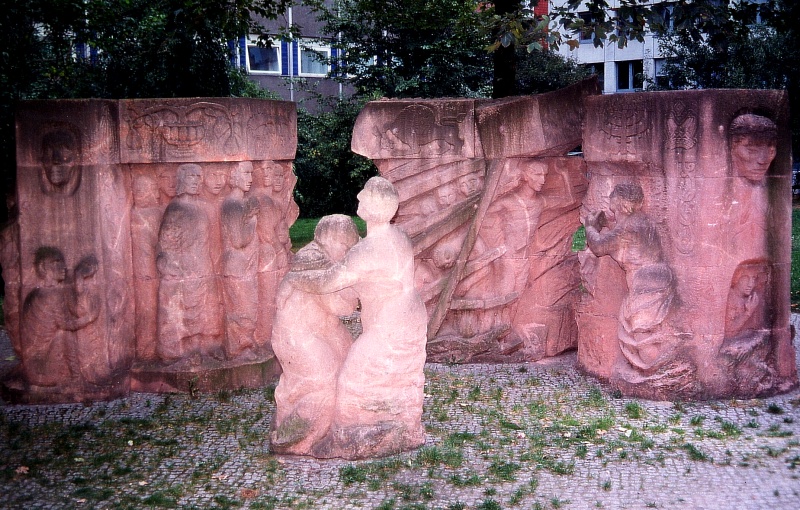
Rosenstrasse protest
The Rosenstrasse protest was a collective street protest on Rosenstraße ("Rose street") in Berlin during February and March 1943. This demonstration was initiated and sustained by the non-Jewish wives and relatives of Jewish men and mischling who had been arrested and targeted for deportation, based on the racial policy of Nazi Germany. The protests continued until the men being held were released. The Rosenstrasse protest is considered to be a significant event as it is the only mass public demonstration by Germans in the Third Reich against the deportation of Jews. In describing the protests, German Foreign Minister Joschka Fischer states, "There were demonstrations, public protests against random arrests, - first dozens, then hundreds, then thousands of women, who demanded in unison "Give us back our men!" This lasted a whole week, in icy weather, in the middle of Berlin in 1943. Finally the protest by the women of the Rosenstrasse, furiously desperate and undeterred by any threats, made the Nazi regime retreat. 1700 Berlin Jews, whom the Gestapo in their so-called "final action" had herded together into the Jewish community house on Rosenstrasse near Alexanderplatz, were freed."
-

Harlem riot of 1943
A race riot took place in Harlem, New York City, on August 1 and 2 of 1943, after a white police officer, James Collins, shot and wounded Robert Bandy, an African-American soldier; and rumors circulated that the soldier had been killed. The riot was chiefly directed by black residents against white-owned property in Harlem. It was one of six riots in the nation that year related to black and white tensions during World War II. The others took place in Detroit; Beaumont, Texas; Mobile, Alabama; and Los Angeles.
-

Beaumont race riot of 1943
Texas State Guard Texas Highway Patrol Texas Rangers
-

1943 Detroit race riot
The 1943 Detroit race riot took place in Detroit, Michigan, of the United States, from the evening of June 20 through the early morning of June 22. It occurred in a period of dramatic population increase and social tensions associated with the military buildup of World War II, as Detroit's automotive industry was converted to the war effort. Existing social tensions and housing shortages were exacerbated by the arrival of nearly 400,000 migrants, both African-American and White Southerners, from the Southeastern United States between 1941 and 1943. The new migrants competed for space and jobs, as well as against European immigrants and their descendants.
-

22 July 1943 Athens protest
The 22 July 1943 Athens protest (Greek: Διαδήλωση της 22ας Ιουλίου 1943) was a massive protest that took place in Axis-occupied Athens, Greece on July 22, 1943 against the German plans to expand the Bulgarian occupation zone in Greek Macedonia.
-

April meistakingen
De April-meistaking (ook bekend als de melkstaking of mijnstaking) was een staking in 1943 in Nederland tegen de gedwongen arbeidsinzet tijdens de Tweede Wereldoorlog.
-

Spoorwegstaking van 1944
De spoorwegstaking van 1944 was een nationale staking van het Nederlandse spoorwegpersoneel, die duurde van september 1944 tot de bevrijding in mei 1945.
-

1944 Greek naval mutiny
The 1944 Greek naval mutiny was a mutiny by sailors on five ships of the Royal Hellenic Navy in April 1944 over the composition of the Greek government-in-exile, in support of the National Liberation Front (EAM). Petros Voulgaris was called from retirement and appointed vice-admiral to quell the revolt.
-

Agana race riot
The Agana Race Riot (December 24–26, 1944) took place in Agana, Guam, as the result of internal disputes between white and black United States Marines. The riot was one of the most serious incidents between African-American and European- American military personnel in the United States Armed Forces during World War II.
-

Terrace mutiny
The Terrace mutiny was a revolt by Canadian Army soldiers based in Terrace, British Columbia during the Second World War. The mutiny, which began on November 24, 1944, and ended on November 29, 1944, was the most serious breach of discipline in Canadian military history. The mutiny was triggered by the rumour that conscript soldiers based on the home front would be deployed overseas.
-

Helwan riots (1945)
The Helwan riots were protests by South African soldiers in Helwan, Egypt over their housing conditions and treatment while being repatriated at the conclusion of the Second World War. Property damage in the range of millions of Pounds sterling was caused to local businesses, but after placating the unhappy soldiers, they were repatriated to South Africa.
-

Halifax riot
The Halifax VE-Day riots, 7–8 May 1945 in Halifax and Dartmouth, Nova Scotia began as a celebration of the World War II Victory in Europe. This rapidly evolved into a rampage by several thousand servicemen, merchant seamen and civilians, who looted the City of Halifax. Although a subsequent Royal Commission chaired by Justice Roy Kellock blamed lax naval authority and specifically Rear- Admiral Leonard W. Murray, it is generally accepted that the underlying causes were a combination of bureaucratic confusion, insufficient policing, and antipathy between the military and civilians, fueled by the presence of 25,000 servicemen who had strained Halifax wartime resources to the limit.
-

United Auto Workers (UAW) strike of 1945 1946
From November 21, 1945 until March 13, 1946 (113 days), CIO's United Automobile Workers (UAW), organized "320,000 hourly workers" to form a nationwide strike against the General Motors Corporation, workers used the tactic of the sit down strike. It was "the longest strike against a major manufacturer" that the UAW had yet seen, and it was also "the longest national GM strike in its history." As director of the UAW's General Motors Department (coordinator of union relations with GM), Walter Reuther suggested to his colleagues the idea of striking the GM manufacturing plants with a 'one-at-a-time' strategy, which was "intended to maximize pressure on the target company." Reuther also put forth the demands of the strikers: a 30 percent increase in wages and a hold on product prices. However, the strike ended to the dissatisfaction of Walter Reuther and the UAW, and the workers received only a 17.5-percent increase in wages.
-

Black Armada
The Black Armada (Indonesian: Armada Hitam) was a name applied to Dutch merchant and military vessels which were prevented from sailing to the newly proclaimed independent Indonesia from Australian ports due to waterfront strikes or 'black bans' by maritime trade unions from 1945 to 1949.
-
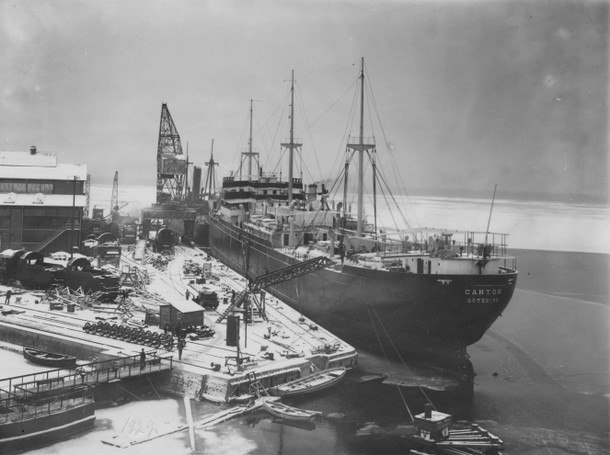
Metallstrejken 1945
Metallstrejken 1945 eller verkstadsstrejken var en strejk som pågick februari till juni 1945 och omfattade 120 000 verkstadsarbetare.
-
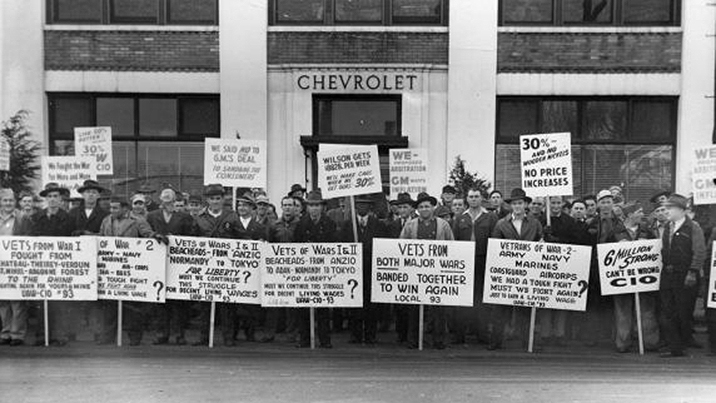
Ford Strike of 1945
The 99-day Ford strike of 1945 took place in Windsor, Ontario, Canada from September 12, 1945, to December 19, 1945. Although several union demands were contentious issues, the two main demands of the UAW Local 200 were "union shop and checkoff," which became a rallying cry for the strikers. Negotiations for a new contract had spanned 18 months and officially ended with the exodus of Ford workers at 10 a.m. on the morning of September 12. The Strike included picketing and eventually led to a two-day blockade of vehicles surrounding the Ford plant on November 5. The strike ended on December 19 as both sides agreed to a temporary agreement proposal, while arbitration regarding the implementation of a fully unionized shop and medical coverage continued under Justice Ivan C. Rand. His report was released on January 29, 1946. The Rand Formula, as it became known, was one result of his report. This gave the UAW formal recognition as the sole negotiators representing all employees of Ford Motor Company. This changed both collective bargaining and labour relations by legitimizing unions.
-

Aldershot riot (1945)
The Aldershot riot occurred on the evenings of 4 and 5 July 1945 when Canadian troops of the Canadian Army Overseas tired of waiting to be repatriated rioted in the streets of Aldershot in Hampshire, causing considerable damage to property.
-
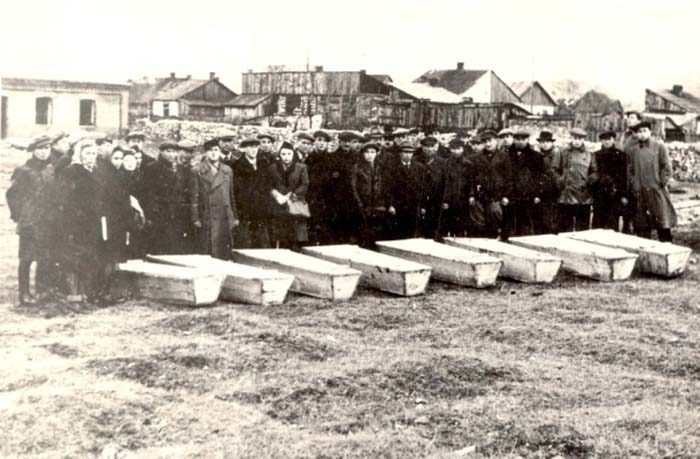
Kraków pogrom
The Kraków pogrom refers to the violent events that occurred on 11 August 1945, in the Soviet- occupied city of Kraków, Poland, which resulted in the shooting death of Róża Berger while standing behind closed doors by security forces, and the wounding of five others.
-

Topoľčany pogrom
The Topoľčany pogrom was an antisemitic riot in Topoľčany, Slovakia, on 24 September 1945 and the best-known incident of postwar violence against Jews in Slovakia. The underlying cause was resurgent antisemitism directed at Jewish Holocaust survivors who demanded the return of property that had been stolen during the Holocaust. Rumors spread that a local Catholic school would be nationalized and the nuns who taught there replaced by Jewish teachers.
-

Ústí massacre
The Ústí massacre (Czech: Ústecký masakr, German: Massaker von Aussig) was a lynching of ethnic Germans in Ústí nad Labem (Aussig an der Elbe), a largely ethnic German city in northern Bohemia ("Sudetenland"), shortly after the end of World War II, on 31 July 1945. During the incident, at least 43 Germans were killed (confirmed body count) but the estimated numbers range from 80 to thousands of victims.
-

1946 African Mine Workers' Union strike
The African Mine Workers' Strike was a labour dispute involving mine workers of Witwatersrand in South Africa. It started on 12 August, 1946 and lasted approximately a week. The strike was attacked by police and over the week, at least 1,248 workers were wounded and at least 9 killed.
-
1946 Pilbara strike
The 1946 Pilbara strike was a landmark strike by Indigenous Australian pastoral workers in the Pilbara region of Western Australia for human rights recognition and payment of fair wages and working conditions. The strike involved at least 800 Aboriginal pastoral workers walking off the large Pastoral Stations in the Pilbara on 1 May 1946, and from employment in the two major towns of Port Hedland and Marble Bar. The strike did not end until August 1949 and even then many indigenous Australians refused to go back and work for white station owners.
-
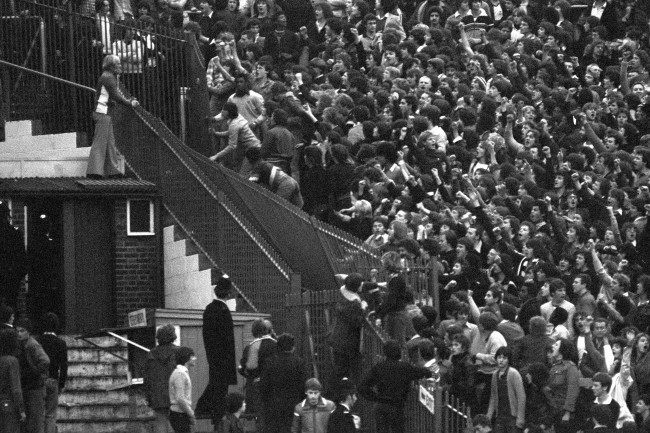
Airport Homes race riots
The Airport Homes race riots were a series of riots in 1946 in the West Lawn and West Elsdon neighborhoods of Chicago, Illinois. It was the worst episode of racial inspired violence that the city faced in some thirty years.
-
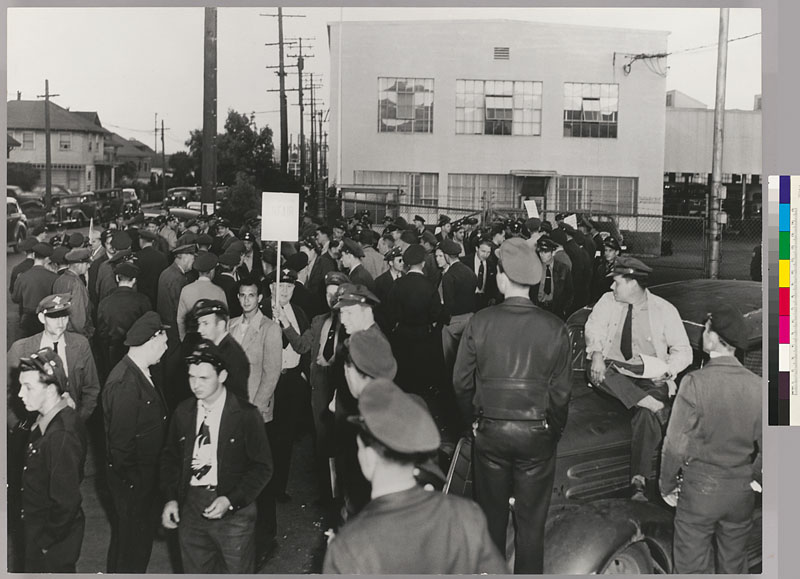
1946 Oakland general strike
The Oakland general strike took place on December 3, 1946, in Oakland, California. The strike followed an earlier strike by 400 female employees of Hastings and Kahn's, who had walked out in the fall of 1946 because of the resistance Oakland's retail merchants had to unionization.
-

1946 Montreal Cottons strike
The Montreal Cottons Company strike of 1946 was a hundred-day-long strike in which 3,000 mill workers from Salaberry-de-Valleyfield, Quebec, fought for the right to obtain a collective agreement. Mill workers in Valleyfield walked off the job on June 1, 1946, as part of a larger textile strike movement which included one of Dominion Textile's mills located within Montreal. The strikes were organized by the Textile Workers Union of America (TWUA), an international union. In Valleyfield, Kent Rowley and Madeleine Parent acted as representatives of the UTWA.
-

Vaga de Manresa de 1946
La vaga de Manresa de 1946 fou una vaga dura a terme pels treballadors del sector tèxtil de Manresa el gener de 1946, una de les primeres realitzades durant el franquisme. A causa de l'anguniosa situació alimentària agreujada per la manca de treball i l'augment de les restriccions elèctriques, que obligaven a jornades de treball aclaparadores, augmentà el descontentament dels treballadors del sector tèxtil. El moviment s'inicià el 25 de gener pels treballadors de Textiles Bertrand Serra SA quan se'ls va descomptar de la nòmina el jornal del dia 24, no treballat per la festa de l'alliberament. En no arribar a un acord amb l'empresa iniciaren una vaga de braços plegats. Immediatament van rebre el suport d'UGT, CNT i PSUC.
-
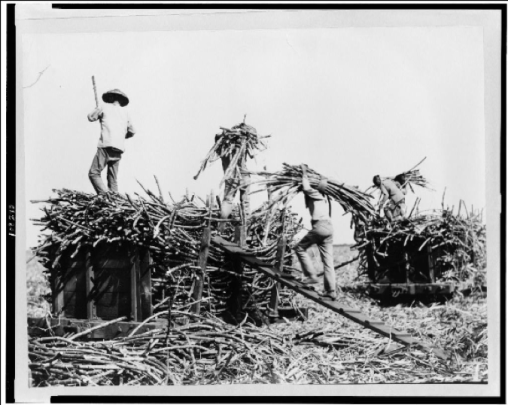
Hawaiian sugar strike of 1946
The Hawaiian sugar strike of 1946 was one of the most expensive strikes in history. This strike involved almost all of the plantations in Hawaii, creating a cost of over $15 million in crop and production. This strike would become one of the leading causes for social change throughout the territory.
-
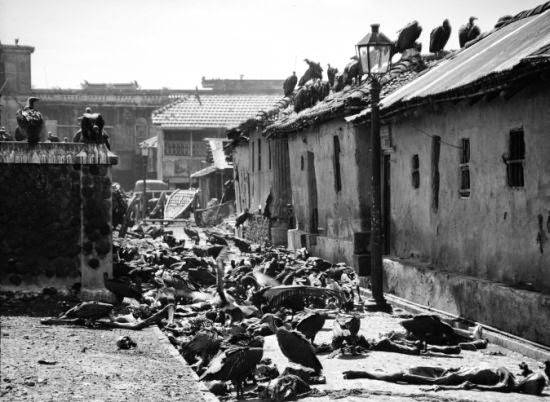
1946 Bihar riots
Communal riots occurred in Bihar from 24 October to 11 November 1946, in which Hindu mobs targeted Muslim families. The riots were triggered by the Great Calcutta Killings, as well as the Noakhali riots earlier that year. Mahatma Gandhi declared that he would fast unto death if the riots did not stop. The riots were part of a sequence of communal violence that culminated in the partition of India.
-
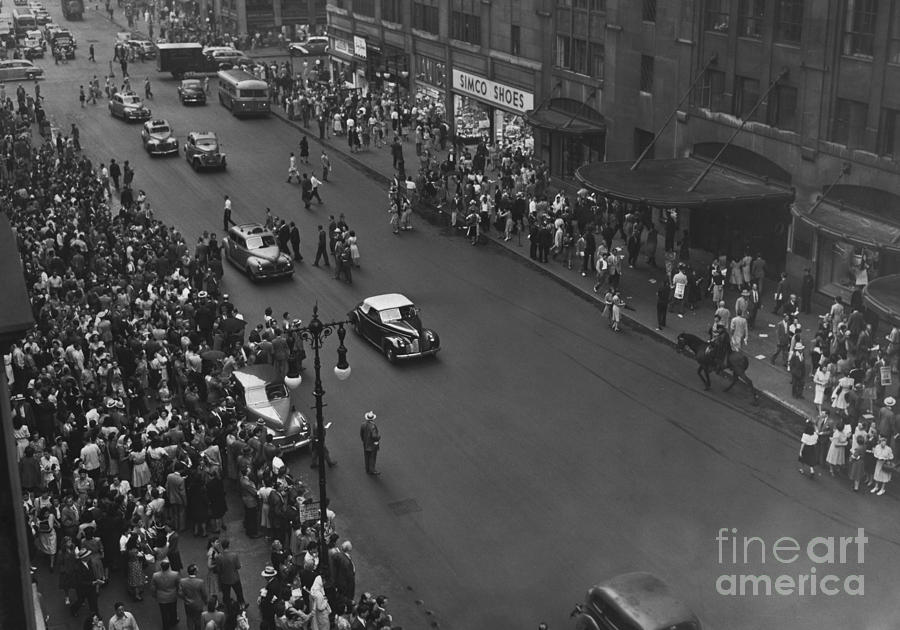
New York City tugboat strike of 1946
During the strike wave of 1945–46 a strike of almost 3,500 tugboat workers occurred on Monday February 1, 1946. The expectations of the strike were to bring the world's busiest harbor to a virtual standstill. Captain William Bradley, president of Local 333, United Maritime Division, International Longshoremen's Association, stated two days before the actual strike that a strike vote had been taken the previous week-end, during a breakdown of negotiations with the Employers Wage Adjustment Committee, which represents the owners and operators in this port.
-
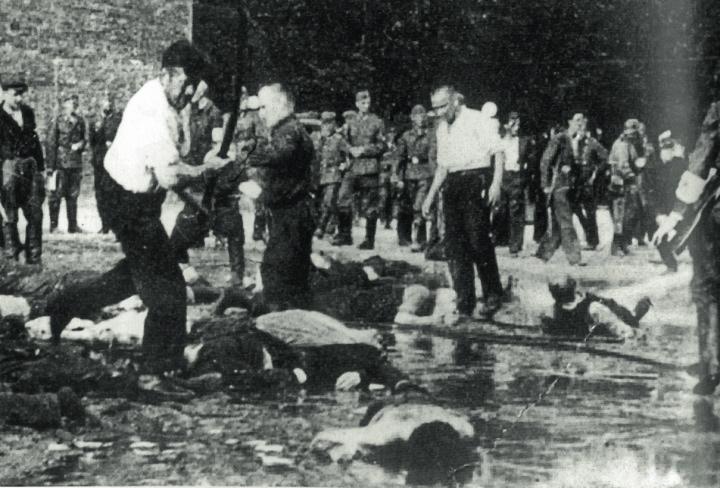
Kielce pogrom
The Kielce pogrom was an outbreak of violence toward the Jewish community centre's gathering of refugees in the city of Kielce, Poland on 4 July 1946 by Polish soldiers, police officers, and civilians during which 42 Jews were killed and more than 40 were wounded. Polish courts later sentenced nine of the attackers to death in connection with the crimes.
-

飯米獲得人民大会
飯米獲得人民大会(はんまいかくとくじんみんたいかい)とは、1946年(昭和21年)5月19日に、日本 の東京都千代田区の皇居(宮城)前で行われた、日本国政府の食糧配給遅延に抗議する集会であった。食糧メー デーとも呼ばれる。第二次世界大戦後の社会主義運動の高まりによって、最大で25万人が集結した。
-
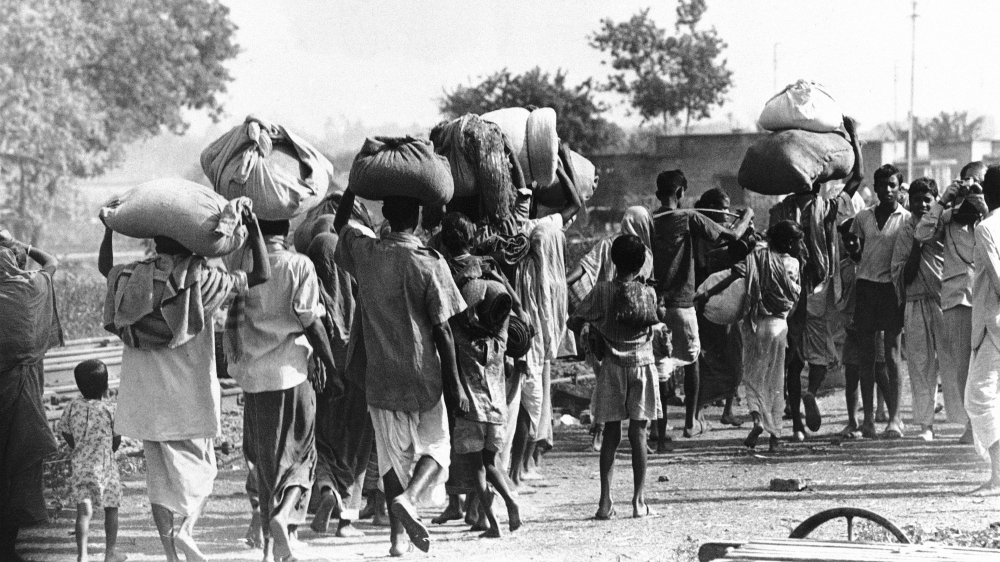
1947 Jerusalem riots
The 1947 Jerusalem Riots occurred following the vote in the UN General Assembly in favour of the 1947 UN Partition Plan on 29 November 1947.
-

1947 anti Jewish riots in Aleppo
The 1947 anti-Jewish riots in Aleppo were an attack on Syrian Jews in Aleppo, Syria in December 1947, following the United Nations vote in favour of partitioning Palestine. The attack, a part of an anti-Jewish wave of unrest across the Middle East and North Africa, resulted in some 75 Jews murdered and several hundred wounded. In the aftermath of the riots, half the city's Jewish population fled the city.
-
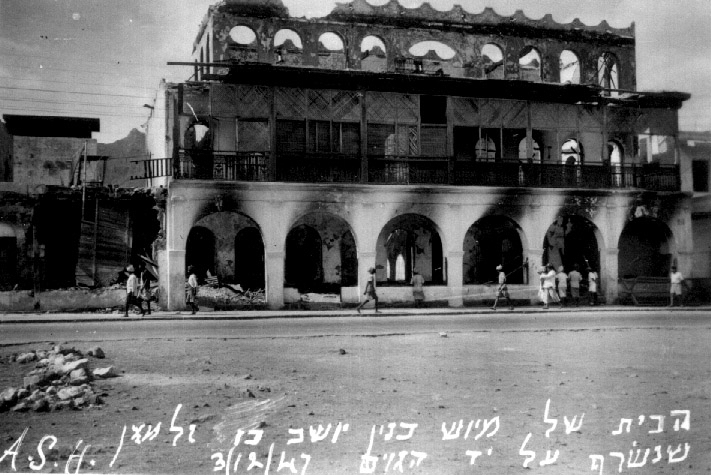
1947 Aden riots
The 1947 Aden riots were three days of violence in which the Jewish community of Aden (in modern-day Yemen) was attacked by members of the Yemeni-Arab community in early December, following the approval of the United Nations Partition Plan for Palestine on 29 November 1947. It was one of the most violent pogroms in modern times against Mizrahi-Jewish communities in the Middle East, resulting in the deaths of 76–82 Jews, 33 Arabs, 4 Muslim Indians, and one Somali, as well as wide-scale devastation of the local Jewish community of Aden.
-

Biratnagar Jute Mill Strike
The Biratnagar Jute Mill Strike (Majdur Hartal) of March 1947 was a labour strike in Biratnagar, Nepal, by workers and laborers of Biratnagar Jute Mill, Ltd. The strike was initially against the management regarding labor rights, but gradually turned into a nationwide anti-regime movement.
-

Varnsdorfská stávka
Varnsdorfská stávka byla stávka, které proběhla dne 5. března proti navrácení továrny podnikateli židovského původu a německé kulturně- jazykové orientace jménem Emil Beer ve Varnsdorfu. Stávka byla úspěšná, soud zamítl žádost o navrácení továrny. Okresní soud v rozporu se svým předchozím rozhodnutím navrátit Beerovi vlastnická práva k majetku, který byl nucen prodat jako Žid po německém záboru pohraničí v říjnu 1938, vyhověl s ohledem na stávku protistraně a tento majetek prohlásil za konfiskovaný; vzal přitom v potaz, že Emil Beer se nikdy nepřihlásil k české národnosti, vždy se hlásil buďto k národnosti německé, či židovské a úředním styku používal jazyk německý. Byl členem židovské obce, která používala německý jazyk. Emil Beer v září 1938 odešel do Anglie a v listopadu 1945 se vrátil do Čech a požadoval navrácení majetku. Dále bylo Emilu Beerovi vyčítáno, že se nezúčastnil aktivně odboje.Stávky proti navrácení továrny se zúčastnilo 10 tisíc lidí, a stávka měla velký vliv na únorové události roku 1948.
-

Fernwood Park race riot
The Fernwood Park race riot was a violent racial conflict instigated by white residents against African American residents who inhabited the Chicago Housing Authority (CHA) veterans' housing project in the Fernwood Park neighborhood in Chicago. Area residents viewed this as one of several attempts by the CHA to initiate racial integration into white communities. The riot took place between 98th and 111th streets and lasted for three days, from the day veterans and their families moved into the project, August 13th, 1947 to August 16th, 1947. The Chicago Police Department did little to stop the rioting, as was the case a year before at the Airport Homes race riots. It was one of the worst race riots in Chicago history.
-

February 28 incident
The February 28 incident or the February 28 massacre, also known as the 228 (or 2/28) incident (from Chinese: 二二八事件; pinyin: Èr’èrbā shìjiàn), was an anti-government uprising in Taiwan that was violently suppressed by the Kuomintang-led Republic of China government, which killed thousands of civilians beginning on February 28, 1947. The number of Taiwanese deaths from the incident and massacre was estimated to be between 5,000 and 28,000. The massacre marked the beginning of the White Terror, in which tens of thousands of other Taiwanese went missing, died or were imprisoned. The incident is one of the most important events in Taiwan's modern history and was a critical impetus for the Taiwan independence movement.
-

Arabian lakko
Arabian lakko oli syksyllä 1948 Arabian Posliinituotetehtaalla Helsingin Toukolassa järjestetty korpilakko. Lakko sai voimakkaan poliittisia sävyjä, sillä sen katsottiin kytkeytyvän Suomen Kommunistisen Puolueen (SKP) kampanjaan Fagerholmin sosiaalidemokraattisen vähemmistöhallituksen kaatamiseksi. Tehtaan ammattiosasto oli kommunistijohtoinen. Sosiaalidemokraattien johtama Suomen Ammattiyhdistysten Keskusliitto (SAK) vastusti lakkoa, sillä se piti tärkeämpänä hallituksen tukemista, ja päätyi siten samalle puolelle työnantajan kanssa. Lakko muistetaan varsinkin sen yhteydessä tehtaan porteilla 22. lokakuuta 1948 tapahtuneesta mellakasta, jossa ratsupoliisit hajottivat väkivaltaisesti lakkolaisten mielenosoituksen. Lakko päättyi työnantajan täydelliseen voittoon.
-

Longshore strike 1948
The Longshore Strike 1948 was an industrial dispute which took place in 1948 on the west coast of the United States. President of the ILWU (International Longshore and Warehouse Unions) at the time was Harry Bridges. The WEA (waterfront employers association) led by Frank P. Foise were in a conflict, they were unable to come to agreeable terms and with the issues of hiring and the politics of union leadership, longshoremen and marine unions performed a walk out on September 2, 1948.The strike shut down the United States’ West Coast ports and put a dent in American labor history and a positive change for future longshoremen.
-

Boeing strike of 1948
The Boeing Company was founded by William Edward Boeing in 1916, but the company did not have the name of Boeing from the start, at the time it was called Pacific Aero Products. The company started to sell a two-seater floater plane which was the main mode for business. The motto that William Edward Boeing believed it was, “To let no new improvement in flying and flying equipment pass us by.” This motto has held up even through today for Boeing has led the way for innovations with their airplanes. In 1945 president of the company Philip G. Johnson died and William McPherson Allen took his place. During this time that market for wartime planes was no longer which resulted in Allen having to close the doors temporarily and to let go of 25,000 workers. To save the company Allen announced that he was going to start making commercial planes.
-

1948 Accra riots
The Accra Riots started on 28 February 1948 in Accra (capital of present-day Ghana, which at the time was the British colony of the Gold Coast), after a protest march by unarmed ex-servicemen – who were agitating for their legitimate benefits as veterans of World War II – was broken up by police, leaving several leaders of the group dead. Among those killed was Sergeant Nii Adjetey, who has since been memorialized in Accra. In January 1948, the Ga chief, Nii Kwabena Bonne III, known in private life as Theodore Taylor (1888–1968), had organized a boycott of all European imports in response to their inflated prices, and the 28 February incident is considered "the straw that broke the camel's back", marking the beginning of the process of the Gold Coast towards being the first African colony to achieve independence, becoming Ghana on 6 March 1957.
-

Jönköpingskravallerna 1948
Jönköpingskravallerna 1948 (i samtida press kallade "tattarkravallerna") betecknar en serie händelser som ägde rum runt midsommaren 1948 i Jönköping.
-

1948 Queensland railway strike
The 1948 Queensland railway strike was a strike which lasted nine weeks, from 3 February to 5 April 1948, over wages of workers at railway workshops and locomotive depots in Queensland, Australia.
-

Zengakuren
Zengakuren is a league of communist and anarchist students founded in 1948 in Japan. The word Zengakuren (全学連) is an abridgement of Zen Nihon Gakusei Jichikai Sō Rengō (全日本学生自治会総連合) which literally means "All-Japan League of Student Self- Government." Notable for organizing protests and marches, Zengakuren has been involved in Japan's Anti-Red Purge Movement, the Peace Treaty Movement, the struggle against the construction of Narita Airport and opposition to the Korean War in its first stage.
-

Durban riots
The Durban riots were an anti-Indian pogrom that took place between 13–15 January 1949, primarily by African people targeting Indians in Durban, South Africa. The two days of rioting were exceptionally violent resulting in rape and massacre of Indians, looting, burning of their properties, claiming 142 lives and creating 40,000 Indian refugees.
-

Marche des femmes sur Grand Bassam
La marche des femmes sur Grand-Bassam désigne un mouvement de contestation à l'initiative des femmes en Côte d'Ivoire, qui se rendent d'Abidjan à Grand-Bassam du 22 au 24 décembre 1949 pour demander la libération des responsables politiques emprisonnés par les autorités coloniales françaises. Le bilan de la journée du 24 décembre était de cinq gendarmes agressés et quatre femmes arrêtées selon les autorités locales, tandis que le journal Le Patriote de Saint-Étienne du 27 décembre 1949 faisait état de plus de 40 femmes blessées.
-

1949 Australian coal strike
The 1949 Australian coal strike was the first time that Australian military forces were used during peacetime to break a trade union strike. The strike by 23,000 coal miners lasted for seven weeks, from 27 June 1949 to 15 August 1949, with troops being sent in by the Ben Chifley Federal Labor government to the open cut coal mines in New South Wales on 28 July 1949, with the workers returning to work, defeated, two weeks later.
-

Asbestos strike
The Asbestos strike of 1949, based in and around Asbestos, Quebec, was a four-month labour dispute by asbestos miners. It has traditionally been portrayed as a turning point in Quebec history that helped lead to the Quiet Revolution. It also helped launch the careers of Jean Marchand, Gérard Pelletier, and Pierre Trudeau.
-

Revolución de la chaucha
La revolución de la chaucha o revuelta de la chaucha fue una manifestación realizada los días 16 y 17 de agosto de 1949, en Santiago de Chile, con motivo del alza del valor del transporte colectivo en 20 centavos de peso (una «chaucha» en el lenguaje popular chileno).
-

Englewood race riot
The Englewood race riot, or Peoria Street riot, was one of many post-World War II race riots in Chicago, Illinois that took place in November 1949.
-

Anacostia Pool riot
The Anacostia Pool riot took place on June 29, 1949, at a recently-desegregated public swimming pool in the Anacostia neighborhood of Washington, DC. After two days of tense confrontations between white and black patrons of the pool, a two-hour large-scale disturbance involving 450 people resulted in five arrests and at least four serious injuries. Bill Mabry, one of the black swimmers involved, called the incident “Washington’s first race riot.” Despite pressure to relax the enforcement of the federal government’s nonsegregation policy, the Department of the Interior stated that “no backward step of any sort should be made in effectuating the President’s Civil Rights program,” specifically with respect to Washington, DC.
-

Peekskill riots
The Peekskill riots were race riots directed against African Americans and Jews attending a civil rights benefit concert. that took place at Cortlandt Manor, Westchester County, New York, in 1949. The catalyst for the rioting was an announced concert by black singer Paul Robeson, who was well known for his strong pro-trade union stance, civil rights activism, communist affiliations, and anti-colonialism. The concert, organized as a benefit for the Civil Rights Congress, was scheduled to take place on August 27 in Lakeland Acres, just north of Peekskill.
-

Puget Sound fishermen's strike of 1949
Puget Sound fishermen's strike of 1949 was a labor strike by fishermen in the Pacific Northwest.
-

1949 Kemi strike
The 1949 Kemi strike was a strike in July–August 1949 by the workers of Kemi Oy (today a part of Metsä Group) in the Northern Finnish town of Kemi. On August 18 the strike escalated on a violent clash called "Kemi Bloody Thursday" between strikers and local police, two workers were killed and several injured. Kemi strike is so far the last fatal political protest in Finland.
-

1949 anti NATO riot in Iceland
The anti-NATO riot in Iceland of 30 March 1949 was prompted by the decision of the Alþingi, the Icelandic parliament, to join the newly formed NATO, thereby involving Iceland directly in the Cold War, opposing the Soviet Union and re- militarizing the country.
-

1950 Austrian general strikes
The Austrian General Strikes of 1950 were masterminded by the Communist Party of Austria with half-hearted support of the Soviet occupation authorities. In August–October 1950 Austria faced a severe social and economic crisis caused by anticipated withdrawal of American financial aid and a sharp drop in real wages. Negotiations between the government and the trade unions stalled, and on September 26 the Communists launched the first general strike. A total of 120 thousand industrial workers walked out of factories, disrupted railroad traffic and harassed government officers. Austrian government, the Socialists and trade unions defused the situation and on September 27 the Communists backed off. The second strike of October 4–5, limited to Vienna and Soviet-occupied Lower Austria, also ended in a humiliating defeat.
-

Atlanta transit strike of 1950
The Atlanta transit strike of 1950 was a lengthy transit strike that lasted from May 18, 1950 to November 16, 1950 in Atlanta, Georgia.
-
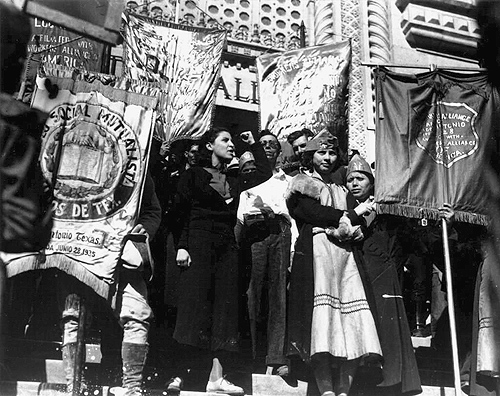
Empire Zinc strike
The Empire Zinc strike, also known as the Salt of the Earth strike, was a 15-month-long miners' strike in New Mexico against the Empire Zinc Company for its discriminatory pay and housing practices. The strike drew national attention, and after it was settled in 1952, a movie entitled Salt of the Earth (1954) was released that offered a fictionalized version of events.
-

Селски бунтове в България (1950) Уикипедия
Селските бунтове са поредица от безредици в редица села в България, главно в Оряховско, Врачанско, Пловдивско и Асеновградско, в опит за съпротива срещу провежданата от тоталитарния комунистически режим колективизация.
